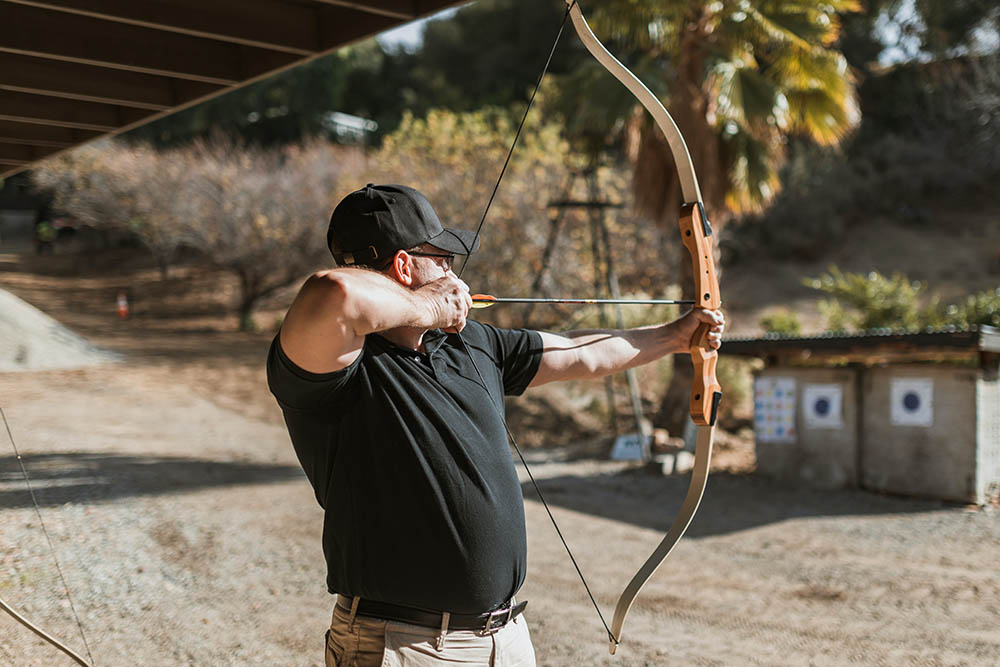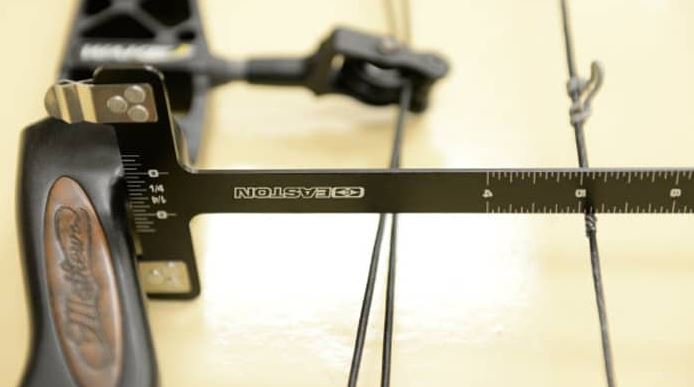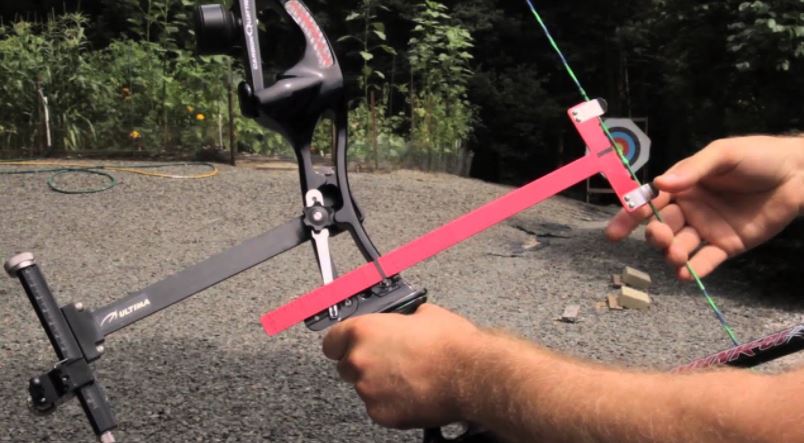To fire a recurve bow, stand perpendicular to your target with your non-dominant side facing forward.
Plant your feet firmly shoulder width apart with your legs straddling the shooting line. Try to get the line dead center of your body for the best shot.
Keep your body perpendicular to the target. You should only turn your head to look at the target. Avoid twisting your trunk or hips.
Hold the bow with your non-dominant hand. You need to grip it firmly at the handle but don’t strangle the bow. The more relaxed you are the more accurate your shot will be. ArcheryEdge.com answers this question today:

Before lifting your bow, nock your arrow by fitting the notch onto your string. The shaft of the arrow should sit on the arrow rest.
Lift your arm to the shoulder and keep it straight. Bending at the elbow will make it more difficult to draw your bow.
Make sure that the odd colored vane on your arrow, faces away from your bow and towards your now straight arm. The vanes are the plastic wings near the end of the arrow.
Draw the bowstring back with your dominant hand. You want to keep your arm in line with the arrow and let the stronger back muscles do most of the work.
The bow string should touch your face at the corner of your mouth. Don’t be afraid, it won’t hurt you. This is known as the anchor point.
Close your non-dominant eye and aim down the arrow. If you have a sight, then line the notches of your sight up with the target.
To release, relax your fingers slowly and smoothly. Jerking your hand away will ruin your aim and set the arrow off course.
Keep your arm raised until the arrow has hit the target. You don’t want to accidentally move too early and ruin your shot.
How do you measure brace height on a recurve bow?
Measuring the brace height is as simple as getting a ruler, a bow square, or a measuring tape and, well, measuring the brace height!

The measurement should be taken from the deepest part of your grip to the bow string. In essence, you are trying to find the largest distance between your grip and your bow string.
You can measure your brace height when you’re holding your bow, however, for greater accuracy you’ll want to secure your bow in a tuning stand or rack.
Try to keep the tape or ruler straight as you measure between the grip and the bow string. If you tilt it, you add length to your measurement. This can make it inaccurate and ruining your tuning.
When it comes to brace height, every quarter of an inch can make a difference. Take your time getting this measurement and make sure you double-check.
Remember that consistency is key, in archery so keeping your brace height consistent is imperative.
Can you put a whisker biscuit on a recurve bow?
Whisker biscuits are specialized bow rests that use synthetic fibers to secure the arrow in place. The fibers circle the arrow shaft and offer more stability when aiming and during release.

The bristles are designed so that the arrow vanes can pass through with as little resistance as possible, although it is impossible to remove all resistance.
Mostly, whisker biscuits are used on compound hunting bows. They are advantageous when hunting because they allow you to shoot from award or difficult angles without worrying about dropping the arrow.
You can hold the bow at 90 degrees, upside down, or tilted at an angle, and the arrow will stay in place.
The other great thing about whisker biscuits is the loading slot. This is a cut in the top edge of the biscuit that allows you to drop an arrow in for quick loading. This is much easier than having to feed the arrow through the center.
On recurve bows, whisker biscuits are less helpful. In fact, they can even be a hindrance. First and foremost, if you’re using feathered arrows, you’ll find that the ‘whiskers’ eventually trash them. They just can’t stand up to the resistance provided by the whiskers even if they are lined up correctly.
Secondly, you’ll find aiming your bow more difficult with a whisker biscuit. This is partly down to the fact that the biscuit obscures the tip of the arrow, which ruins your line of sight. However, it is also down to the fact that the biscuit is designed to be used with a release not with your fingers.
Most recurve bows use finger release and so the biscuits make your shot less accurate.
How do you aim with a recurve bow?
Aiming will be different if you’re using a sight compared to if you’re shooting instinctively.

Aiming with a sight is fairly simple. Raise your bow and draw the string. At full draw, find your target and look down the sight with your dominant eye. Make sure to close the non-dominant eye.
When the crosshair or pin of your sight lines up with the target, release your arrow.
You may need to fine tune your sight over a couple of shots. This is called chasing the arrow. In essence, if your arrow is going, to the left, for example, move your sight to the left and try again. Do this until the arrows no longer go to the left.
Instinctive aiming is harder to teach because it’s, well, instinctive. Some archers see it as a formulaic science while others talk about it in a mystical, almost spiritual sense.
In essence, instinctive shooting involves closing one eye and looking down the arrow to aim. You line the tip of your arrow up with the target and shoot. Over a few shots, you work out how much higher or lower you need to move the bow to account for the distance.
In the archery world this is known as gap shooting. You can also practice see and shoot aiming. This is when you raise the bow and shoot at what you see. It is the ultimate form of instinctive aiming.

